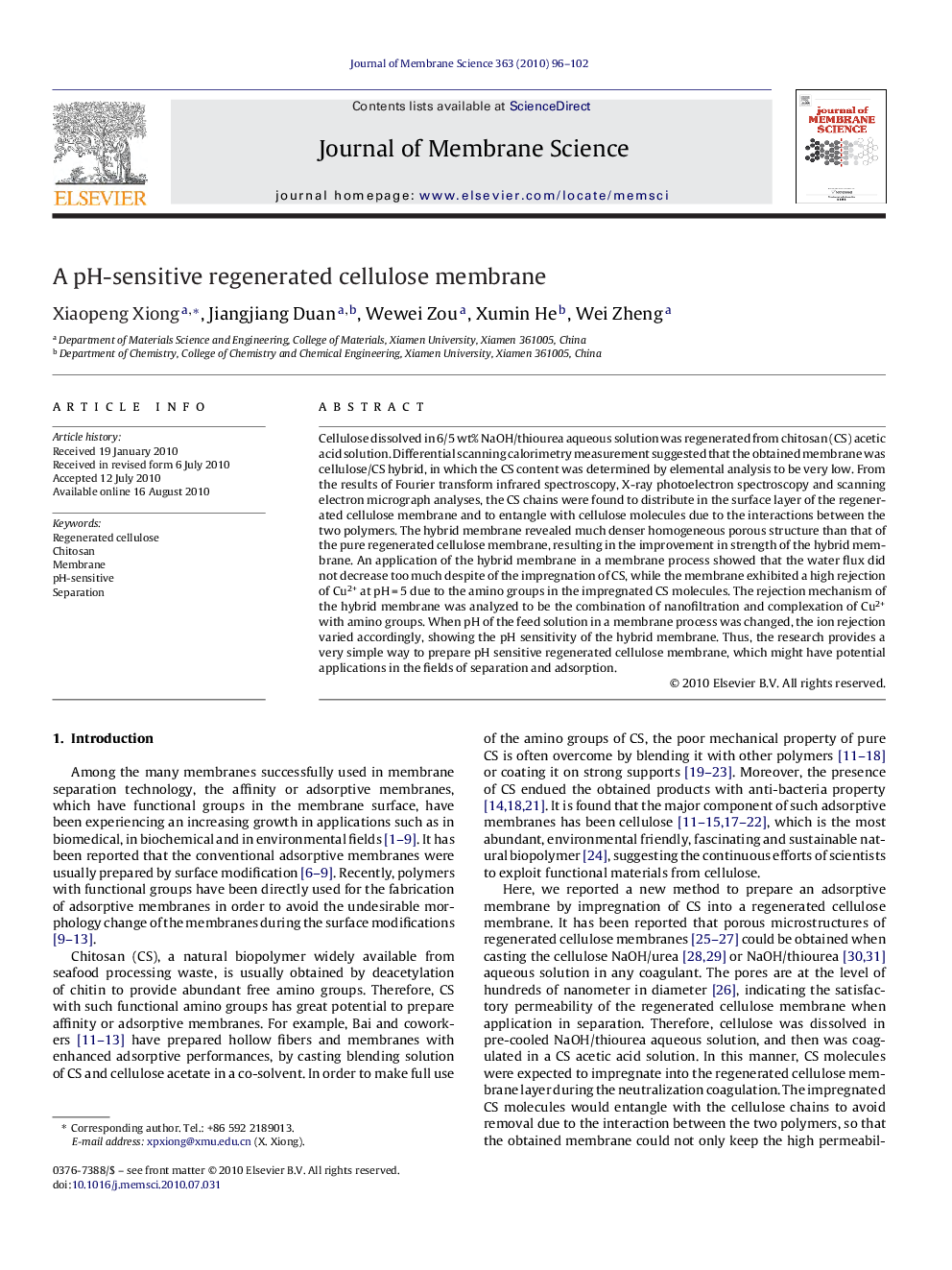| Article ID | Journal | Published Year | Pages | File Type |
|---|---|---|---|---|
| 636190 | Journal of Membrane Science | 2010 | 7 Pages |
Cellulose dissolved in 6/5 wt% NaOH/thiourea aqueous solution was regenerated from chitosan (CS) acetic acid solution. Differential scanning calorimetry measurement suggested that the obtained membrane was cellulose/CS hybrid, in which the CS content was determined by elemental analysis to be very low. From the results of Fourier transform infrared spectroscopy, X-ray photoelectron spectroscopy and scanning electron micrograph analyses, the CS chains were found to distribute in the surface layer of the regenerated cellulose membrane and to entangle with cellulose molecules due to the interactions between the two polymers. The hybrid membrane revealed much denser homogeneous porous structure than that of the pure regenerated cellulose membrane, resulting in the improvement in strength of the hybrid membrane. An application of the hybrid membrane in a membrane process showed that the water flux did not decrease too much despite of the impregnation of CS, while the membrane exhibited a high rejection of Cu2+ at pH = 5 due to the amino groups in the impregnated CS molecules. The rejection mechanism of the hybrid membrane was analyzed to be the combination of nanofiltration and complexation of Cu2+ with amino groups. When pH of the feed solution in a membrane process was changed, the ion rejection varied accordingly, showing the pH sensitivity of the hybrid membrane. Thus, the research provides a very simple way to prepare pH sensitive regenerated cellulose membrane, which might have potential applications in the fields of separation and adsorption.
Research highlightsA very easy method has been developed to prepare a pH sensitive regenerated cellulose membrane by simply coagulating alkali cellulose solution in a chitosan acidic solution. The obtained membrane has improved mechanical property due to a denser structure, which is due to the impregnation of chitosan molecules. The impregnated chitosan molecules entangle with cellulose molecules in the surface layer of the regenerated cellulose membrane, and endue the membrane satisfactory water flux and high heavy metal ion rejection in spite of very low amount. The amino groups of the impregnated chitosan molecules can be protonated to different degrees, so the hybrid membrane is pH sensitive.
